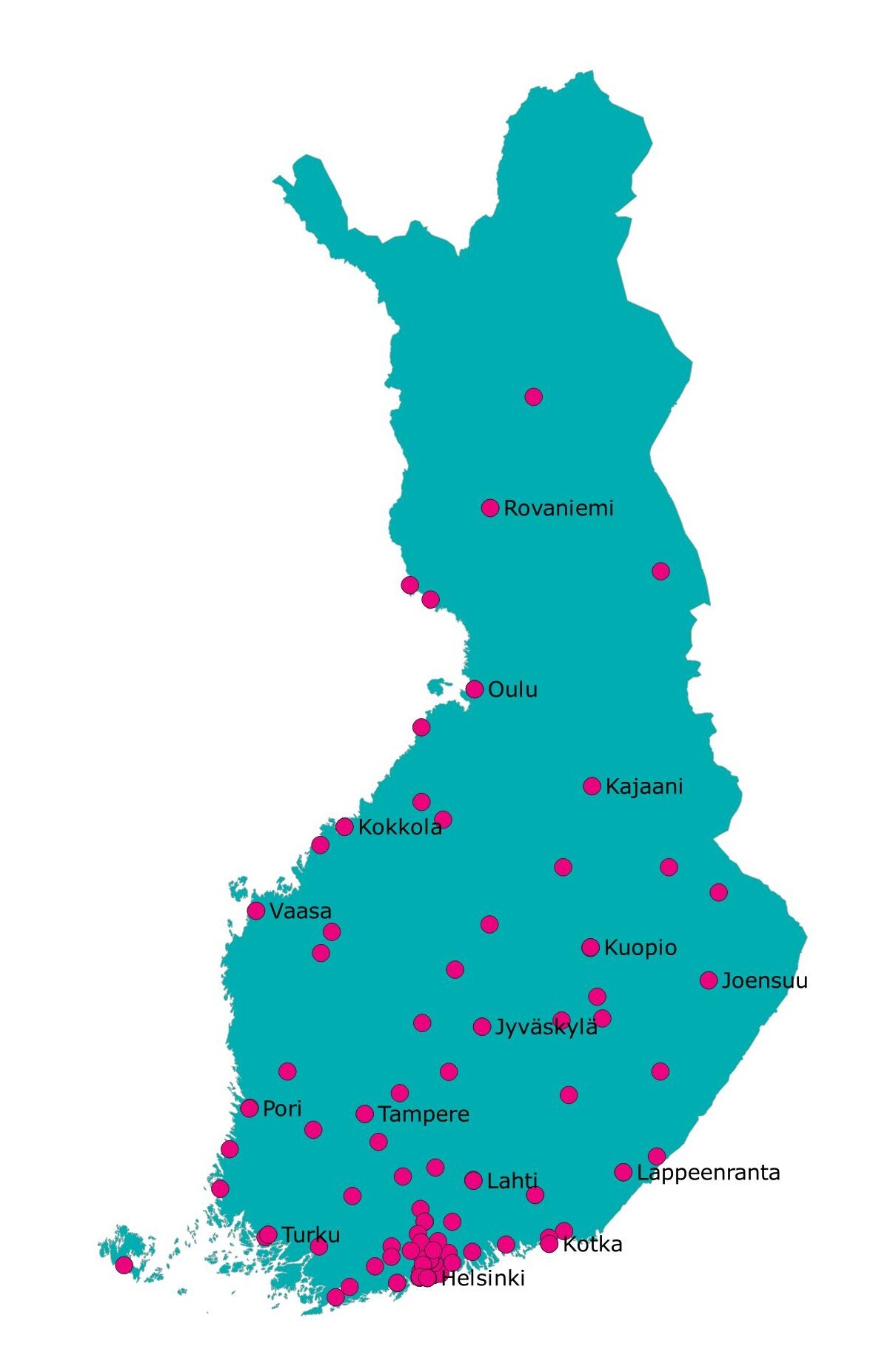This situational picture provides a summary of long-distance bus transport nodes in Finland. The situational picture is updated once a year. The information is produced by the Finnish Transport and Communications Agency Traficom and the Finnish Transport Infrastructure Agency. The information is part of the strategic situational picture of the Finnish transport network.
The long-distance bus traffic nodes of most national importance are Helsinki (Kamppi), Tampere, Jyväskylä and Oulu.
Often, the main terminals are utilised in a versatile manner by market-driven long-distance bus transport services, contract-based transport by ELY Centres and local public transport.

In addition to the terminals pictured, bus transport is served by a comprehensive network of stops in urban street networks and the state-owned highway network.
Proportion of stops maintained by ELY Centres and municipalities:
- ELY Centres: 63,446 stops, 73%
- municipalities: 23,593 stops, 27%.
Helsinki Region Transport (HSL) is also in charge of travel information on stops in the highway network in the operating area of HSL.
Public transport stops in the highway network
In the state-owned road network, the network of public transport stops is maintained by nine ELY Centres, which organise public transport in their jurisdiction.
Node stops take priority in the development of the stops’ infrastructure and equipment, because they are significant in terms of transfer connections, park-and-ride systems and numbers of passengers boarding. The most important node stops in the highway network are specified in ELY Centres’ node stop reports (solmupysäkkiselvitykset), which are drafted in cooperation with municipalities. Some of the reports also contain the most important terminals and nodes in the street network.
Bus transport node development needs – viewpoint of long-distance bus transport
- City centres are key nodes for bus transport. Increasingly dense land use decreases the space for buses to stop and park. At the same time, the increase in tourism increases demand for coach services. Helsinki city centre has some identified issues.
- Travel centre and station area projects should ensure sufficient space reservations and streamlined transport connections for the needs of coach and charter traffic (incl. in Turku, Tampere, Oulu, Helsinki, Rovaniemi). Similarly, ports and airports should ensure sufficient space reservations for the needs of bus transport. Identified challenges can be found in ports in Helsinki.
- Public transport priorities should be developed on routes used by long-distance bus transport connections, especially on entry routes to cities (bus lanes, lane arrangements in intersections). Communications concerning street worksite arrangements and other exceptional arrangements should be developed.
- The quality level of most important long-distance stops should be raised and the stops’ accessibility by foot and bicycle should be developed. Central stops in municipalities and node stops should take priority in this development work.
- The most important node and transfer stops should be identified in regional transport system planning. Currently, node stops have been inconsistently identified in transport system plans and regional plans, usually at least as a theme that needs development.
- The service level of passenger services and travel information varies greatly in the main terminals of large and medium-sized cities. Oulu, Lappeenranta and Kotka currently have the most room for improvement, with Kotka only providing a platform area for bus passengers.